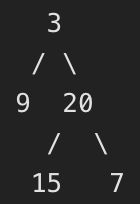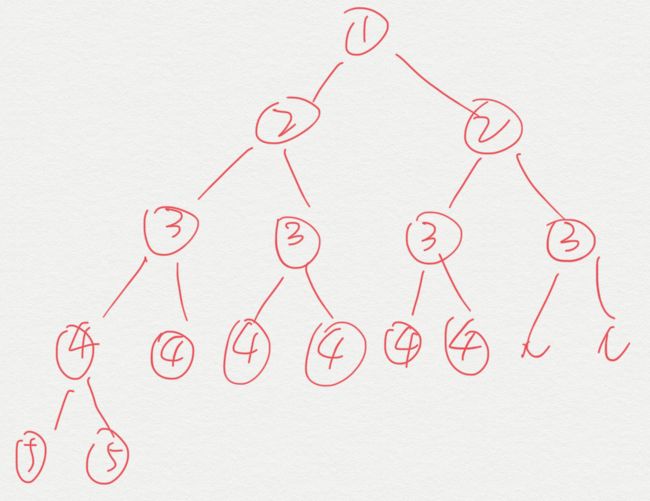- Mysql索引底层数据结构及原理解析
有缘再见
一、索引是什么?索引是帮助mysql高效获取数据排序好的数据结构。索引存储在文件里面。磁盘存取原理:1.寻道时间(速度慢,费时)2.旋转时间(速度较快)磁盘构造数据文件存储在磁盘的磁道划分出的扇区里面。磁盘指针先去找到数据存储在哪一个磁道(寻道时间),然后逆时针旋转找打扇区(旋转时间)。现在都在优化减少寻道时间。二、常见的数据结构介绍。(一)二叉树。二叉树示意图定义:二叉树(binarytree)
- 技术演进中的开发沉思-38 MFC系列:关于打印
chilavert318
熬之滴水穿石mfcc++
打印程序也是MFC开发中不能忽视的一个环节,现在做打印开发soeasy。但当年做打印开发还是挺麻烦。在当年的桌面程序里就像拼图的最后一块,看着简单,实则要把屏幕上的像素世界,准确映射到打印机的物理纸张上。而MFC的打印机制就像老照相馆的暗房:你不用懂显影液的配方(打印机驱动),但得知道怎么调整光圈(设备上下文),才能让照片(打印效果)和底片(屏幕显示)一致。一、打印MFC用“设备上下文”(DC)机
- 手持激光雷达单木分割——以河南工程学院杰出校友杨靖宇将军雕塑背后树林为例
河工点云智绘WangG
河工点云智绘教育培训
教学相长,最近带学生激光雷达实习,采集了河南工程学院校园机载、车载和手持激光雷达数据,针对手持激光雷达,也来玩玩单木分割。一、手持激光雷达单木分割概念单木分割(IndividualTreeSegmentation)是从激光雷达(LiDAR)点云数据中识别并分离出单棵树木的过程,是林业资源调查、森林碳汇估算、生物多样性研究的关键技术。二、关键技术步骤详解1.点云预处理去噪:移除飞点、鸟群等非地表物体
- Java:实现Ternary search三元搜索算法(附带源码)
Katie。
Java算法完整教程算法
一、项目背景详细介绍在计算机科学与软件工程领域,查找算法是最基础也是最重要的模块之一。对于有序数组的查找,经典的二分(Binary)查找算法凭借O(log N)的时间复杂度在许多场景中被广泛应用。另一方面,三元(Ternary)查找作为对二分查找的扩展,将区间划分为三段,每次比对两个“探测点”而非一个,从理论上也能达到对数级时间复杂度。三元查找常用于以下几种场景:函数极值查找当我们要在一个unim
- 【Java】【力扣】102.二叉树层序遍历
思路一个辅助队列(初始化队列:根节点入队)一个节点出队,他的左右孩子入队循环直到队列为空举例代码publicList>levelOrder(TreeNoderoot){if(root==null){returnnewArrayList>();}Queuequeue=newLinkedList>resultList=newArrayListlevel=newArrayList<>();intcurS
- 指定阿里镜像原理
web前端神器
web前端前端
代码如下:npminstall@nut-tree/template-matcher--registry=https://registry.npmmirror.com如果要看阿里资源是否有这个插件可以直接去这里搜索:https://npmmirror.com/package/@nut-tree/template-matcher/home?version=2.0.1这边会自动去下载这个文件,鼠标悬浮则
- 二分查找进阶:查找最靠左和最靠右的索引(Java实现)
算法第二深情
算法学习算法javaintellij-idea
一、引言在实际开发中,二分查找(BinarySearch)是一种高效的查找算法,尤其在处理有序数组时表现出色。然而,标准的二分查找只能返回目标值的任意一个位置(例如中间位置)。如果需要找到目标值的最左索引或最右索引(例如统计重复元素的出现次数),或者只需要单纯知道最左或最有二、普通二分查找vs.边界查找1.普通二分查找publicstaticintbinarySearch(int[]arr,int
- Python day18
赵英英俊
Python训练python
@浙大疏锦行pythonday18.内容:昨天学习了聚类算法的一些基本内容,今天继续学习相关知识分析簇的特征和相关含义(使用可视化来进行分析,也可以使用ai)代码:shap.initjs()#初始化SHAP解释器explainer=shap.TreeExplainer(model)shap_values=explainer.shap_values(x1)#这个计算耗时shap_values.sha
- 备份11111
Ellie艾藜
前端
hospital:医疗小项目后台管理,React+axios+antdhttps://gitee.com/whiteshader/ruoyi-react/tree/spring-cloud-v3/#%E6%BC%94%E7%A4%BA%E5%9B%BE
- Python网络爬虫实现selenium对百度识图二次开发以及批量保存Excel
WeiJingYu.
python爬虫selenium
一.百度识图自动上传图片fromseleniumimportwebdriverfromselenium.webdriver.edge.optionsimportOptionsfromselenium.webdriver.common.byimportByedge_options=Options()edge_options.binary_location=r"C:\ProgramFiles(x86)
- Day61 二叉树中的最大路径和
Shimmer_
给你一个二叉树的根节点root,返回其最大路径和https://leetcode-cn.com/problems/binary-tree-maximum-path-sum/路径被定义为一条从树中任意节点出发,沿父节点-子节点连接,达到任意节点的序列。同一个节点在一条路径序列中至多出现一次。该路径至少包含一个节点,且不一定经过根节点路径和是路径中各节点值的总和。示例1:1/\23输入:root=[1
- Failed to fetch http://packages.ros.org.ros/ubuntu/dists/xenial/InRelease
尝试了将地址修改成http://packages.ros.org/ros/ubuntu/dists/xenial/InRelease,更差;尝试了sudorm-f/etc/apt/sources.list.d/ros-latest.list/binary-amd64/Packages不建议这么做。过了一阵子,自己好了!!!!总结:查看自己网络连接,或者等一会再update,自己就好了。
- 408数据结构强化(自用)
计算机筱贺
数据结构算法c语言
常用代码片段(持续更新)折半查找voidSearchBinary(intA[];intx){intlow=0,high=n-1,mid;while(low=mid)R--;A[L]=A[R];while(L=R)return;intM=huafen(A,L,R);Qsort(A,M+1,R);//右半部分快排Qsort(A,L,M-1);//左半部分快排}快速排序的划分思想//使用划分函数找到数组
- 【PTA数据结构 | C语言版】前序遍历二叉树
秋说
PTA数据结构题目集数据结构c语言算法
本专栏持续输出数据结构题目集,欢迎订阅。文章目录题目代码题目请编写程序,创建一棵有3个结点的二叉树,并输出其前序遍历序列。输入格式:输入给出3个整数,依次为二叉树根结点的左孩子、右孩子、根结点本身存储的键值。输出格式:输出二叉树的前序遍历序列,每个数字占一行。输入样例:123输出样例:312代码#include#includetypedefstructTreeNode{intdata;struct
- Leetcode刷题营第三十三题:对称二叉树
101.对称二叉树给你一个二叉树的根节点root,检查它是否轴对称。示例1:输入:root=[1,2,2,3,4,4,3]输出:true示例2:输入:root=[1,2,2,null,3,null,3]输出:false提示:树中节点数目在范围[1,1000]内-100val!=q->val){returnfalse;}returnismirrortree(p->left,q->right)&&is
- 别穿高跟鞋了!“大衣+这11双鞋”正流行,时髦又显高,好看极了!
clgh
大衣向来是冬天的主场!它兼具温度与风度、能包容所有身材、且不拘泥于某种单一的风格。穿上大衣,不但能提升你的品味,整个人的气场和气质都发生了变化,更加自信了。不过,大衣想要穿出时髦精致感,关键在于选对鞋子!说到鞋子,可千万别以为只有高跟鞋才可以hold住大衣的超强气场。“大衣+这4双鞋”的混搭造型,照样能碰撞出惊艳的时尚火花,打造出舒适又有个性的easychic,即便是小个子女生也能完美驾驭。1、大
- python 安装PyV8 和 lxml
近来在玩python爬虫,需要使用PyV8模块和lxml模块。但是执行pipinstallxx或者easy_installxx指令都会提示一些错误。这些错误有些是提示pip版本过低或者缺少vc++9.0环境,再或者一些头文件无法引用等等。我也懒得找错误解决方法。就直接下载Pyv8模块的安装包和lxml的安装包。Pyv8的安装包链接:1.针对win32+python2.7的安装包PyV8-1.0-p
- 二叉搜索树(binary search tree)
使用场景用作系统中的多级索引,实现高效的查找、插入、删除操作。作为某些搜索算法的底层数据结构。用于存储数据流,以保持其有序状态。特点1.对于根节点满足:任意左子树节点num)cur=cur.left;//找到目标节点,跳出循环elsebreak;}//返回目标节点returncur;}插入操作1.查询插入位置,从根节点出发,根据当前节点和插入num的大小判断在左右子树,直到越过叶子节点跳出循环,(
- 【算法训练营Day13】二叉树part3
十八岁讨厌编程
算法训练营算法
文章目录平衡二叉树二叉树的所有路径左叶子之和完全二叉树的节点个数平衡二叉树题目链接:110.平衡二叉树平衡二叉树的定义:该二叉树的所有节点的左右子树高度差不大于1解题逻辑:这个题和我们前一篇文章说的二叉树的高度是有关的,那么我们是否可以考虑复用求二叉树高度的代码?一个最主要的问题就是求高度的方法返回值是int类型的,而我们判断二叉树是否平衡肯定是想返回boolean,那么我们可以考虑使用-1当作信
- 减肥真的有那么难吗?
卡塔老爸
我之前没有认真的研究过减肥这件事,不过也有过几次减肥失败的经历,在减肥大军中也听到看到很多失败或者放弃的例子,原以为减肥不容易,但是最近由于自己身体问题,减肥提上必须完成的重要级,我比较全面的研究和实践后发现,减肥其实soeasy。首先明确一下减肥的概念,减肥是减脂不是减重,很多人存在这样一个误区,看着体重秤来衡量自己是胖是瘦,还有一些体重标准,什么体重应该是身高乘以多少多少的算法,好像人体重量全
- vue-cli 模式下安装 uni-ui
目录easycom自定义easycom配置的示例npm安装uni-ui准备sass安装uni-ui注意easycom传统vue组件,需要安装、引用、注册,三个步骤后才能使用组件。easycom将其精简为一步。只要组件路径符合规范(具体见下),就可以不用引用、注册,直接在页面中使用。如下://这里不用import引入,也不需要在components内注册uni-list组件。template里就可以
- C#,List<T> 与 Vector<T>
大语言模型掘墓人
c#list开发语言vectorSIMD
List是C#中最常用的动态数组实现,位于System.Collections.Generic命名空间。Add(T)将对象添加到List的末尾。AddRange(IEnumerable)将指定集合的元素添加到List的末尾。AsReadOnly()返回当前集合的只读ReadOnlyCollection包装器。BinarySearch(Int32,Int32,T,IComparer)使用指定的比较器
- B 树和 B+ 树
前端_学习之路
数据结构数据结构b树
一、B树和B+树的基本概念B树和B+树是两种重要的平衡多路搜索树,特别适合在磁盘等外存设备上组织和存储数据。它们通过增加节点的分支因子,减少树的高度,从而减少磁盘I/O操作,提高数据访问效率。B树(B-Tree)B树是一种自平衡的多路搜索树,每个节点可以有多个子节点。主要特点所有叶子节点在同一层每个节点可以包含多个键值和子节点节点的键值按升序排列除根节点外,每个节点至少有m/2个子节点(m为树的阶
- C++数据结构————二叉树
Гений.大天才
C++语言入门以及基础算法c++数据结构开发语言
【前言】在数据结构与算法的世界里,二叉树(BinaryTree)始终占据着核心地位。它既是众多高级树形结构(B+树、红黑树、线段树、字典树……)的“基因”,又是面试、竞赛与工程实战中绕不开的考点。本文将用大约2万字的篇幅,从“零”开始,把C++二叉树的所有常见形态、常见算法、常见坑点与常见优化一次性讲透。全文配套可编译运行的C++17/20代码2000余行,所有示例均在GCC13/Clang17/
- STM32F103R6的Keil和Protues仿真-点亮LED灯
怎么就重名了
stm32嵌入式硬件单片机
STM32F103R6的Keil和Protues仿真-点亮LED灯STM32F103R6的Keil和Protues仿真-点亮LED灯1、效果1.1、低电平点亮1.2、高电平点亮2、代码2.1、Keil2.2、protueshttps://gitee.com/xiaolixi/l-stm32/tree/master/STM32Protues/diandeng-lowhttps://gitee.com
- 学习笔记(39):结合生活案例,介绍 10 种常见模型
宁儿数据安全
#机器学习学习笔记生活
学习笔记(39):结合生活案例,介绍10种常见模型线性回归只是机器学习的“冰山一角”!根据不同的任务场景(分类、回归、聚类等),还有许多强大的模型可以选择。下面我用最通俗易懂的语言,结合生活案例,介绍10种常见模型及其适用场景:一、回归模型(预测连续值,如房价)1.决策树(DecisionTree)原理:像玩“20个问题”游戏,通过一系列判断(如“面积是否>100㎡?”“房龄是否0.5就判为“会”
- TreeSize Free - windows下硬盘空间管理工具
AI+程序员在路上
QT&C++实战系列开发语言windows
一.介绍TreeSizeFree是一款免费且广受欢迎的磁盘空间分析工具(由JAMSoftware开发),主要用于Windows系统。它的核心功能是帮助你快速、清晰地了解硬盘、文件夹或存储设备上的空间究竟被哪些文件和文件夹占用了。它以直观的树状结构、多种视图(尤其是Treemap)和强大的排序功能,帮助你快速定位磁盘空间消耗大户,是进行磁盘清理、存储管理和解决空间不足问题的必备工具之一。官网下载:h
- 轻松掌握EasyX图形库在Visual C++ 6.0中的应用
Randy Rhoads
本文还有配套的精品资源,点击获取简介:EasyX图形库为VisualC++6.0环境提供了简便的图形界面编程功能。它包括丰富的图形绘制、图像处理、文字操作、图形变换和事件处理等核心特性,辅以详细的API文档和示例代码。该库支持在多个操作系统版本上运行,且具有优化的性能,极大地简化了图形界面的开发流程。1.easyX图形库概述1.1引言easyX图形库是一个基于Windows操作系统的简单易用的图形
- Paimon 删除向量
lifallen
Paimon数据库大数据java数据结构apache
RowKind可以标记删除,但它和DeletionVector(删除向量)是为解决不同场景下的问题而设计的两种机制,它们工作在不同的层面。简单来说:RowKind是“逻辑层”的变更指令,主要用于primary-key表的LSM-Tree合并过程。DeletionVector是“物理层”的读时过滤优化,用于在不重写数据文件的前提下,快速地“标记”某些行为无效,极大地提升了DELETE/UPDATE操
- Redux架构解析:状态管理的核心原理
止观止
架构前端react.jsredux
Redux作为JavaScript应用的状态管理库,其技术架构与核心原理围绕可预测的状态管理设计,通过严格的单向数据流和函数式编程理念实现复杂应用的状态控制。以下从设计理念、核心架构、工作流程、源码实现等角度进行系统性剖析:一、设计理念与原则单一数据源(SingleSourceofTruth)整个应用的状态存储在一个全局Store对象中,形成唯一的状态树(StateTree)。优势:简化状态共享和
- eclipse maven
IXHONG
eclipse
eclipse中使用maven插件的时候,运行run as maven build的时候报错
-Dmaven.multiModuleProjectDirectory system propery is not set. Check $M2_HOME environment variable and mvn script match.
可以设一个环境变量M2_HOME指
- timer cancel方法的一个小实例
alleni123
多线程timer
package com.lj.timer;
import java.util.Date;
import java.util.Timer;
import java.util.TimerTask;
public class MyTimer extends TimerTask
{
private int a;
private Timer timer;
pub
- MySQL数据库在Linux下的安装
ducklsl
mysql
1.建好一个专门放置MySQL的目录
/mysql/db数据库目录
/mysql/data数据库数据文件目录
2.配置用户,添加专门的MySQL管理用户
>groupadd mysql ----添加用户组
>useradd -g mysql mysql ----在mysql用户组中添加一个mysql用户
3.配置,生成并安装MySQL
>cmake -D
- spring------>>cvc-elt.1: Cannot find the declaration of element
Array_06
springbean
将--------
<?xml version="1.0" encoding="UTF-8"?>
<beans xmlns="http://www.springframework.org/schema/beans"
xmlns:xsi="http://www.w3
- maven发布第三方jar的一些问题
cugfy
maven
maven中发布 第三方jar到nexus仓库使用的是 deploy:deploy-file命令
有许多参数,具体可查看
http://maven.apache.org/plugins/maven-deploy-plugin/deploy-file-mojo.html
以下是一个例子:
mvn deploy:deploy-file -DgroupId=xpp3
- MYSQL下载及安装
357029540
mysql
好久没有去安装过MYSQL,今天自己在安装完MYSQL过后用navicat for mysql去厕测试链接的时候出现了10061的问题,因为的的MYSQL是最新版本为5.6.24,所以下载的文件夹里没有my.ini文件,所以在网上找了很多方法还是没有找到怎么解决问题,最后看到了一篇百度经验里有这个的介绍,按照其步骤也完成了安装,在这里给大家分享下这个链接的地址
- ios TableView cell的布局
张亚雄
tableview
cell.imageView.image = [UIImage imageNamed:[imageArray objectAtIndex:[indexPath row]]];
CGSize itemSize = CGSizeMake(60, 50);
&nbs
- Java编码转义
adminjun
java编码转义
import java.io.UnsupportedEncodingException;
/**
* 转换字符串的编码
*/
public class ChangeCharset {
/** 7位ASCII字符,也叫作ISO646-US、Unicode字符集的基本拉丁块 */
public static final Strin
- Tomcat 配置和spring
aijuans
spring
简介
Tomcat启动时,先找系统变量CATALINA_BASE,如果没有,则找CATALINA_HOME。然后找这个变量所指的目录下的conf文件夹,从中读取配置文件。最重要的配置文件:server.xml 。要配置tomcat,基本上了解server.xml,context.xml和web.xml。
Server.xml -- tomcat主
- Java打印当前目录下的所有子目录和文件
ayaoxinchao
递归File
其实这个没啥技术含量,大湿们不要操笑哦,只是做一个简单的记录,简单用了一下递归算法。
import java.io.File;
/**
* @author Perlin
* @date 2014-6-30
*/
public class PrintDirectory {
public static void printDirectory(File f
- linux安装mysql出现libs报冲突解决
BigBird2012
linux
linux安装mysql出现libs报冲突解决
安装mysql出现
file /usr/share/mysql/ukrainian/errmsg.sys from install of MySQL-server-5.5.33-1.linux2.6.i386 conflicts with file from package mysql-libs-5.1.61-4.el6.i686
- jedis连接池使用实例
bijian1013
redisjedis连接池jedis
实例代码:
package com.bijian.study;
import java.util.ArrayList;
import java.util.List;
import redis.clients.jedis.Jedis;
import redis.clients.jedis.JedisPool;
import redis.clients.jedis.JedisPoo
- 关于朋友
bingyingao
朋友兴趣爱好维持
成为朋友的必要条件:
志相同,道不合,可以成为朋友。譬如马云、周星驰一个是商人,一个是影星,可谓道不同,但都很有梦想,都要在各自领域里做到最好,当他们遇到一起,互相欣赏,可以畅谈两个小时。
志不同,道相合,也可以成为朋友。譬如有时候看到两个一个成绩很好每次考试争做第一,一个成绩很差的同学是好朋友。他们志向不相同,但他
- 【Spark七十九】Spark RDD API一
bit1129
spark
aggregate
package spark.examples.rddapi
import org.apache.spark.{SparkConf, SparkContext}
//测试RDD的aggregate方法
object AggregateTest {
def main(args: Array[String]) {
val conf = new Spar
- ktap 0.1 released
bookjovi
kerneltracing
Dear,
I'm pleased to announce that ktap release v0.1, this is the first official
release of ktap project, it is expected that this release is not fully
functional or very stable and we welcome bu
- 能保存Properties文件注释的Properties工具类
BrokenDreams
properties
今天遇到一个小需求:由于java.util.Properties读取属性文件时会忽略注释,当写回去的时候,注释都没了。恰好一个项目中的配置文件会在部署后被某个Java程序修改一下,但修改了之后注释全没了,可能会给以后的参数调整带来困难。所以要解决这个问题。
&nb
- 读《研磨设计模式》-代码笔记-外观模式-Facade
bylijinnan
java设计模式
声明: 本文只为方便我个人查阅和理解,详细的分析以及源代码请移步 原作者的博客http://chjavach.iteye.com/
/*
* 百度百科的定义:
* Facade(外观)模式为子系统中的各类(或结构与方法)提供一个简明一致的界面,
* 隐藏子系统的复杂性,使子系统更加容易使用。他是为子系统中的一组接口所提供的一个一致的界面
*
* 可简单地
- After Effects教程收集
cherishLC
After Effects
1、中文入门
http://study.163.com/course/courseMain.htm?courseId=730009
2、videocopilot英文入门教程(中文字幕)
http://www.youku.com/playlist_show/id_17893193.html
英文原址:
http://www.videocopilot.net/basic/
素
- Linux Apache 安装过程
crabdave
apache
Linux Apache 安装过程
下载新版本:
apr-1.4.2.tar.gz(下载网站:http://apr.apache.org/download.cgi)
apr-util-1.3.9.tar.gz(下载网站:http://apr.apache.org/download.cgi)
httpd-2.2.15.tar.gz(下载网站:http://httpd.apac
- Shell学习 之 变量赋值和引用
daizj
shell变量引用赋值
本文转自:http://www.cnblogs.com/papam/articles/1548679.html
Shell编程中,使用变量无需事先声明,同时变量名的命名须遵循如下规则:
首个字符必须为字母(a-z,A-Z)
中间不能有空格,可以使用下划线(_)
不能使用标点符号
不能使用bash里的关键字(可用help命令查看保留关键字)
需要给变量赋值时,可以这么写:
- Java SE 第一讲(Java SE入门、JDK的下载与安装、第一个Java程序、Java程序的编译与执行)
dcj3sjt126com
javajdk
Java SE 第一讲:
Java SE:Java Standard Edition
Java ME: Java Mobile Edition
Java EE:Java Enterprise Edition
Java是由Sun公司推出的(今年初被Oracle公司收购)。
收购价格:74亿美金
J2SE、J2ME、J2EE
JDK:Java Development
- YII给用户登录加上验证码
dcj3sjt126com
yii
1、在SiteController中添加如下代码:
/**
* Declares class-based actions.
*/
public function actions() {
return array(
// captcha action renders the CAPTCHA image displ
- Lucene使用说明
dyy_gusi
Lucenesearch分词器
Lucene使用说明
1、lucene简介
1.1、什么是lucene
Lucene是一个全文搜索框架,而不是应用产品。因此它并不像baidu或者googleDesktop那种拿来就能用,它只是提供了一种工具让你能实现这些产品和功能。
1.2、lucene能做什么
要回答这个问题,先要了解lucene的本质。实际
- 学习编程并不难,做到以下几点即可!
gcq511120594
数据结构编程算法
不论你是想自己设计游戏,还是开发iPhone或安卓手机上的应用,还是仅仅为了娱乐,学习编程语言都是一条必经之路。编程语言种类繁多,用途各 异,然而一旦掌握其中之一,其他的也就迎刃而解。作为初学者,你可能要先从Java或HTML开始学,一旦掌握了一门编程语言,你就发挥无穷的想象,开发 各种神奇的软件啦。
1、确定目标
学习编程语言既充满乐趣,又充满挑战。有些花费多年时间学习一门编程语言的大学生到
- Java面试十问之三:Java与C++内存回收机制的差别
HNUlanwei
javaC++finalize()堆栈内存回收
大家知道, Java 除了那 8 种基本类型以外,其他都是对象类型(又称为引用类型)的数据。 JVM 会把程序创建的对象存放在堆空间中,那什么又是堆空间呢?其实,堆( Heap)是一个运行时的数据存储区,从它可以分配大小各异的空间。一般,运行时的数据存储区有堆( Heap)和堆栈( Stack),所以要先看它们里面可以分配哪些类型的对象实体,然后才知道如何均衡使用这两种存储区。一般来说,栈中存放的
- 第二章 Nginx+Lua开发入门
jinnianshilongnian
nginxlua
Nginx入门
本文目的是学习Nginx+Lua开发,对于Nginx基本知识可以参考如下文章:
nginx启动、关闭、重启
http://www.cnblogs.com/derekchen/archive/2011/02/17/1957209.html
agentzh 的 Nginx 教程
http://openresty.org/download/agentzh-nginx-tutor
- MongoDB windows安装 基本命令
liyonghui160com
windows安装
安装目录:
D:\MongoDB\
新建目录
D:\MongoDB\data\db
4.启动进城:
cd D:\MongoDB\bin
mongod -dbpath D:\MongoDB\data\db
&n
- Linux下通过源码编译安装程序
pda158
linux
一、程序的组成部分 Linux下程序大都是由以下几部分组成: 二进制文件:也就是可以运行的程序文件 库文件:就是通常我们见到的lib目录下的文件 配置文件:这个不必多说,都知道 帮助文档:通常是我们在linux下用man命令查看的命令的文档
二、linux下程序的存放目录 linux程序的存放目录大致有三个地方: /etc, /b
- WEB开发编程的职业生涯4个阶段
shw3588
编程Web工作生活
觉得自己什么都会
2007年从学校毕业,凭借自己原创的ASP毕业设计,以为自己很厉害似的,信心满满去东莞找工作,找面试成功率确实很高,只是工资不高,但依旧无法磨灭那过分的自信,那时候什么考勤系统、什么OA系统、什么ERP,什么都觉得有信心,这样的生涯大概持续了约一年。
根本不是自己想的那样
2008年开始接触很多工作相关的东西,发现太多东西自己根本不会,都需要去学,不管是asp还是js,
- 遭遇jsonp同域下变作post请求的坑
vb2005xu
jsonp同域post
今天迁移一个站点时遇到一个坑爹问题,同一个jsonp接口在跨域时都能调用成功,但是在同域下调用虽然成功,但是数据却有问题. 此处贴出我的后端代码片段
$mi_id = htmlspecialchars(trim($_GET['mi_id ']));
$mi_cv = htmlspecialchars(trim($_GET['mi_cv ']));
贴出我前端代码片段:
$.aj


